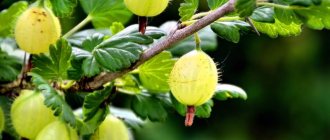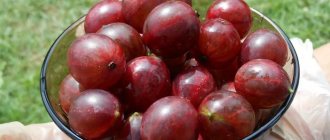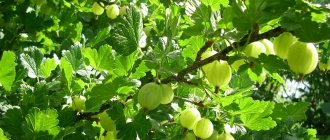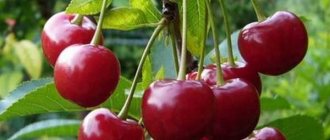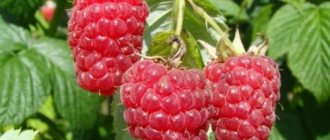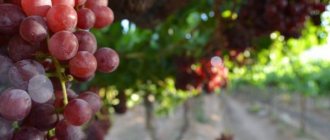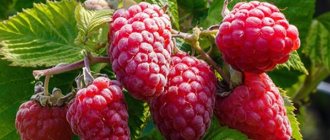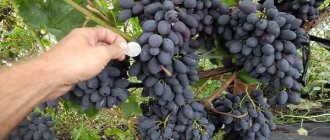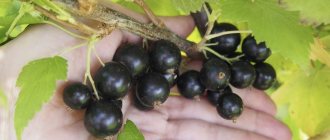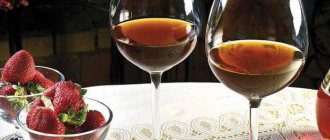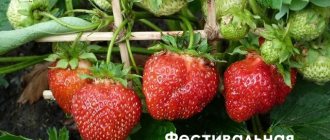Gooseberry variety Kuibyshevsky: description of the variety
Gooseberry Kuibyshevsky: photo
The black-fruited gooseberry of the Kuibyshevsky variety is not too large in size. As it develops, it takes on the shape of a ball. The shoots grow straight and upward. Light growth on the sides is allowed. Young shoots of this species have a small fluff. And also a certain number of thorns. There are no thorns on the internodes. This species is prone to thickening of shoots. Therefore, it is necessary to carry out pruning in a timely manner. It begins to bloom in the 10th day of the last month of the spring period. In height it can, as a rule, reach 170 centimeters. And the diameter of the plant’s crown can reach 150 centimeters.
It is important to know that this variety is a self-fertile crop. Therefore, it does not need pollinating insects.
Agrotechnical features
When caring for gooseberries of the Kuibyshevsky variety, the main activity is regular pruning. If this agrotechnical measure is ignored, the bush will quickly become thickened and the yield will decrease. Pruning is carried out in the fall, preparing the gooseberries for winter. Branches that are more than five years old are mercilessly disposed of. The branches that grow inside the bush are also cut out.
Gooseberries are quite drought-resistant, but during flowering and fruiting, in dry, hot weather, watering is necessary. They are carried out at intervals of 10 days and stopped several weeks before harvest, so that the fruits are sweeter and not watery.
Gardeners are divided on resistance to powdery mildew. There are reviews that talk about absolute immunity. The description of the variety indicates average resistance to fungal diseases.
To be on the safe side, after the autumn sanitary pruning, you should spray the bush with 1% Bordeaux mixture. Additionally, this will prevent overwintering of insect pest larvae on the branches.
The variety is winter-hardy. However, if the winter has little snow and frost, it would not be a bad idea to cover the bush with agrofibre.
On a note. Under no circumstances should you rake fallen leaves from the area to the plant as insulation. It allows pests and pathogenic bacteria to overwinter well and become active in early spring.
Resistance to frost and drought of aronia gooseberry Kuibyshevsky
Kuibyshev gooseberry is resistant to various vagaries of nature. It can withstand frost down to -32 degrees. This is very good for those who are going to grow this variety in the northern regions of the country.
It also tolerates drought quite well. But if there is little moisture, the yield will also decrease.
How the Kuibyshevsky gooseberry bears fruit
From just one bush you can harvest 7 kilograms of harvest. The yield is quite high and stable. The berries begin to ripen on the 20th of the second summer month. Or at the beginning of the third month of summer. The size of gooseberries directly depends on care and comfortable conditions. The weight of one berry can usually be from 3.5 to 8 grams.
The berries themselves are oval shaped. And also there is no pubescence on them. The peel is quite strong, but thin. Ripe berries are dark burgundy in color. Even almost black. The fruits themselves are quite aromatic and sweet. The berries are not suitable for long-term transportation. They can usually be stored in the refrigerator for 7 days. Due to the fact that the berries are very sweet, jams, jams, compotes and various desserts are often prepared from them. They can also be consumed fresh.
Characteristics, description
Gooseberry is a plant of the currant genus of the gooseberry class. The place of origin of this culture is considered to be Europe and North America.
Did you know? In Europe, they first learned about gooseberries in the 16th century. And by the 19th century, several hundred plant varieties had been bred.
Gooseberries of the Kuibyshevsky variety are classified as early gooseberries in terms of ripening and are black-fruited . The bushes have a spherical shape, reaching an average height of 1 m. The branches grow upward and form a lush crown. It is noted that Kuibyshevsky bushes are prone to overgrowing. Few thorns are formed, they are usually medium in size and may be completely absent in some areas of the stem. The leaves are medium in size and have a dark green color without shine.
The fruits are medium in size, up to 9 g, their shape is round and oval. The berries are not pubescent, dark cherry in color. Fully ripe fruits can be almost black in color. The skin is thin, but quite dense. Sometimes a slight waxy coating is possible. The tasting score is 4.4. Suitable regions for cultivation are Central, North-West and South-West.
Advantages and disadvantages of the chokeberry variety
There are some advantages:
- The berries contain a high percentage of vitamin C.
- This variety can grow in semi-shady conditions.
- The shrub has an unusual appearance; you can use it to decorate your area.
- This variety is quite resistant to frost.
- Its berries are very sweet and delicious-smelling.
- This is a self-pollinating variety that does not require pollinating insects. It also produces a consistent harvest.
- This variety is resistant to diseases such as septoria.
Kuibyshev gooseberry has a number of disadvantages :
- Gooseberries grow very actively, thereby thickening their shoots. Because of this, it is necessary to carry out sanitary and anti-aging pruning in a timely manner.
- Its shoots have a number of thorns.
- For this variety, two propagation methods are considered the most suitable: 1) using cuttings; 2) using layering.
Reviews
I try to use more products from my own garden, because... Most of the products from stores that are available to the average pensioner do not have the best composition. Previously, when you bought sausage, you were so sure that it was made from meat, but now it’s either soy or chicken fur. deboning, then they’ll come up with something else. I specifically chose “Kuibyshevsky” gooseberry because of its black fruits. Dark varieties of gooseberries have a high content of vitamin P, which, when interacting with pectin, has a beneficial effect on the body, removing toxins and waste. In addition, gooseberries contain a large amount of bioflavonoids, which strengthen the walls of blood vessels. I would also like to note that the variety is very tasty: the berries are sweet and aromatic, the skin is thin but durable, and the fruits can easily withstand transportation home. The bush is also good: compact, with a beautiful spherical shape.
I chose Kuibyshevsky for its good reviews of the taste of the berries and high winter hardiness. My yield is stable - about 3-4 kg. I collect from every bush. Because I don’t feed it with anything except manure, I think it’s a good result.
Gardeners assess the productivity of this variety as high and stable. Gooseberries are winter-hardy, have average immunity to powdery mildew, and have an excellent taste. Kuibyshevsky is considered one of the best black-fruited varieties.
Propagation using cuttings
You need to pay special attention to this method when pruning in the autumn. To do this, you need to select the strongest and healthiest branches with one or two dormant buds. They need to be very carefully separated from the parent plant. Then the selected branches need to be placed in soil rich in nutrient elements, and also regularly given wet feeding. This is necessary for the cutting to form its own root system. Those cuttings that were able to adapt can be transplanted to open ground before winter, or left in their old place until mid-spring. After the snow has melted, you need to treat the planting material with heteroauxin, and then plant it in the bed while maintaining an angle of forty-five degrees. Then you need to cover the plantings with plastic film, this will help create a greenhouse effect. It is also necessary to carry out watering and ventilation in a timely manner. Regular circulation of fresh air is very important for the bush. If the first foliage appears on the cuttings, then everything went well.
Reproduction using layering
To do this, you need to bend strong young shoots closer to the ground at the end of the spring or at the beginning of the summer and secure them with some kind of strong arc so that they do not straighten out again and return to the bush. Then you need to sprinkle it with soil and then lightly moisten it. In about a month they will take root. After they are rooted, you need to separate the cuttings from the parent plant and plant them in a permanent habitat.
Reproduction methods
To obtain new Kuibyshevsky gooseberry seedlings, you can use layering and cuttings. But for reproduction to be successful, it is necessary to study the features of these two methods.
In the first case, it is necessary to bend the young side branches of the bush to the ground in early spring and deepen their soil by 5-7 cm, leaving only the top. And so that they do not rise, they need to be secured with staples. Throughout the season, it is necessary to keep the soil slightly moist.
Important! You can separate the cuttings from the mother bush after a year.
In the second case, Kuibyshevsky gooseberry cuttings need to be harvested in late autumn when clearing the bushes. They should have one or two vegetative buds. For the winter, the cuttings should be buried in the soil, and in April they should be taken out and planted in a trench at an angle of 45 degrees. For better rooting, you need to make a mini-greenhouse on top. The cuttings should be watered as needed and also ventilated periodically. When they grow a root system and become stronger, they need to be planted. Seedlings can be transplanted to a permanent location only after a year.
Rooting of Kuibyshevsky gooseberry cuttings occurs after 2 months
Kuibyshev gooseberry: how to plant and care
This variety can be planted in open ground both in spring and autumn. If you plant in the spring, then you need to wait until the snow has melted, but the buds have not yet swelled. Since it is impossible to know with one hundred percent probability what the weather will be like, based on this, experienced gardeners recommend planting in the autumn. The most suitable time is the first or second month of the autumn period, or thirty to forty-five days before the start of frost. It is very important to take into account that the planting must have time to take root and adapt, as well as form lateral roots. If this does not happen, the bush will not be able to survive the winter.
The chosen place for planting the bush should be well lit and not swampy. If such measures are observed, the bush will bear fruit stably and abundantly.
When purchasing seedlings, it is very important to examine its appearance. Branches and shoots should be strong and healthy, approximately thirty-five to forty centimeters long. The root system should be well developed and not rotten.
It is very important to prepare seedlings for planting. This requires processing. What is needed for processing: 1) five hundred grams of clay soil; 2) five hundred grams of chernozem soil; 3) one package - root; 4) one and a half liters - clean water, room temperature. All this must be thoroughly mixed until smooth. The root system of the seedling should be placed in this mixture for about three hours.
When planting seedlings and preparing holes for them, it is very important to maintain a distance of at least one hundred centimeters. You need to choose the depth of the planting hole based on the size of the root system of the seedling.
If you have just planted young seedlings, but suddenly there is a threat of frost, then they need to be covered with polyethylene or breathable fabric.
Forum statistics
207036 Messages in 1634 Topics from 5593 Users. Last user: Amaya Last message: “Let's talk about the weather in Vash...” ( Today at 07:52:22 ) Latest messages on the forum.
Now on the forum
39 Guests, 14 Users
Users in the last 15 minutes: vlad51, gardener, Kenig, Nikolay 2, marlin64, rambo, Vasily 53, ALEX, Elvira2017, 77volt, Evgeniy52, kvg, ElenkaF, sergei [Blocked] [Section Moderator] [Forum Moderator]
Maximum online today: 100 . All-time maximum online: 2758 (28 July 2021, 17:22:51)
Users who visited the forum in the last 24 hours
Total: 295
(Visible: 294, Hidden: 1) 1963, gardener, vlad51, Kenig, Nikolay 2, marlin64, Vasily 53, rambo, ALEX, 77volt, Elvira2017, kvg, Evgeniy52, ElenkaF, sergei, Ser, Evgeniy 163, Lyubov S., Erem, Polyanina Ekaterina, kosmos, Yura, GALINA ANOKHINA, DorontsovPeter, ZaycevAS, Alex65, 64nikolay64, Vova Kapran, zsb, Polina77, spotlight, Mikhail Alekseevich, Svetla777, Quiet, Marshal, Nikolay S., therapist, Liza, Capricorn, lomakin1969, Alexander Vl., Andrey76, Slavka, Mikhail77, Tatyana B, Cherkessk, Eugene, leonidych, vladimirM, yotmast, mers, Serg1707, SNovichek, hanter64, znakomij, Alexander K, Vardan, Sergey Fer, Anatoly Sivkov, Alexey V, Ilya 77, Andrey Gladilin, Tatyana A., Belgorodets, in Astrakhan, Oksana Kopp, sem_en, Vladimir 153, skier, Igor Viktorovich, slavalimon, Primorets, OlgaOs, SANYCH, 31rus, mystic69, Andrey Tsvetkov, Buba, igor222, Elena Z, Nikolay Rex, Sergey 1965, Vladimir Buturlakin, DSW, psv1960, Dmitry 77, Vasily V., Vyacheslav03, Natalia Nikolaevna, Sergey Tashchiyan, Igor Sergeevich, alexsandr, Pioneer, nicson7, Elena Aleshchenko, Alexander-ask-34, Verona, Igor F., Taker , Henry, Yuri72, L.A.P., Gaivoronsky Yuri, Sergeevich, Sergei Chistokletov, Svetlana Streletskaya, Galinka, Alexey Deminov, Naumov Igor, Vyacheslav136, Gloomy, Katrin, AndSanych, Mikhno Alexander, Ded31, Filippov Oleg, Vladimir ++ , Lydia58, ALEXANDER BRYANSKY, Vladimir-kanevskaya, DIL, Amber7394, Marina Protasova, TITOVA LYUBOV, Linx, alexander66, Natalya M, Mikhail Fesenko, Amaya, Alexander71, Boris 1952, tsv, Maximilian, 25nata35, nadia, Igor_K, Alexander Kolesnikov , Ivan Levin, Pitko, weather forecaster, eSAa, cecet71, atseton, Alexander Smirnov, Vladimir Kostochkin, Vladimir Berdnikov, Gocha, pioneer-2, LeXa_KoT, Sergey 61, Sergey Yuryev, alexss, Skif, Vladimir Kovba, dayton, Yuri Semyonov, N. A. Sokolov, Pavlentiy, Sa-shura, Volgogradka, Dmitry Anatolyevich, Grandfather Igor, Andrey Lis, Bublichenko Alexander M, Marina Krymskaya, stenlly2010, irahelm, Vyacheslav Vladimirovich, Vladimir Shilov, Aprel, Badaev Dmitry, gheo55, y_fed, Yagodka, Valentina Ivanovna, Kryn, oleg9f, DED2, Svetlana Korotina, Oleg Ivanovich brought in, Eduard., santra, L2k2m7n, Alexander48, Viknik, Andrey 31, m2d, Valery Rastorguev, Soshnin Yura, Amateur gardener, Galina, Vasily1111, Salex, Sergey Ko, Ramiz, Victor_, potap05, Yuri 36, VitalySD, Inna161, Vladimir Shcherbinin, Valerie, niy1, cfibr, Andrey68, kulol3, thanatos, Serzh1978, Realist, Artur53, max2008-01, LOZA, AlexanderD, Ded Young, Natasha, Zayac, ketch , Rita, alx-74, Iv Iv, Alexander150, Igor K, Vasily Viktorovich, VeraNiK, kdm57, Veniaminovich, Boris Sokolyansky, , vikbublik, neposny, Evgen, Victoria Aleksandrovna, Serezha 64, Wintel, Airbone, teri, Sergey Lomonosov, Khramov , serzhinio, Leonty Yarygin, Irina O., Nadezhda Grig, netolya, Saisan, Alexey Agryzkov, Vadi, Zinaida, Vadim, Alexander Taganrog, Sergey Sukhonos, Snezhinets, evgen_26, nau_63, Masha_sadovod, Gennady163, krasnovlad1, Alexander Zinoviev, Roman Fedorovich, TIS, Alexey Sergeevich, arnyusha, Zheka, Nurtas, kradievska, nick041, Valentina Medvedeva, Sergey43, Andrey S., Nikolay Lipunov, Mst, Vertuoz2, Vladimir VS, NatalyaMed, freesia, Kinna, Mikhail Michurinsk, alekcsan1, VALERY TAMB, Sasha57, MikhAf, Y_Azer, Andrey Beribesov, hunter1955, nut lover, Keys, Ivan Shmelev, Pestle, anton_slash, Nadymchanka, Sergey 31, Volgar, Pavel 64, Tatyana Volzh, Elektronik_t
How to plant Kuibyshev gooseberries
It is necessary to add to the planting hole: 1) one hundred grams of wood ash, the ash must be from pure wood, that is, not painted, not varnished, not glued; 2) ten kilograms - rotted manure or fallen leaves; 3) fifty grams - superphosphate; 4) forty grams of potassium sulphide. All this must be mixed very thoroughly.
Those branches and foliage that have dried out must be removed from the plant. You also need to trim the tops of young shoots. Each shoot must have at least five buds.
You can place the seedling in the hole at a slight angle. Then you need to sprinkle it with earth and lightly compact the soil. The plant needs to be watered. The plant needs to be given the right amount of time and effort. Under no circumstances should agrotechnical rules be neglected.
It is necessary to regularly loosen and dig up the soil. But it is important to consider the type of soil. If the soil is loose, then it does not require as deep digging as dense soil. Digging the soil itself involves loosening it to a depth of no more than seven centimeters. Beyond the perimeter of the plant crown, deeper digging can be done.
It is necessary to promptly destroy weeds near the bush. Because of them, a high percentage of humidity is created in the lower part of the bush.
It is very important to apply suitable fertilizers and fertilizers. Every year, for one bush it is necessary to allocate: 1) ten kilograms of organic compost; 2) forty grams of saltpeter; 3) twenty grams of potassium chloride; 4) eighty grams of superphosphate. In the first twelve months, after planting, there is no need to apply fertilizer, but from the next spring, the first fertilizing should be done after the crop has flowered, and then after harvesting. This will help the plant maintain its immune system, active growth and development. Fertilization of the plant and resistance to frost also depend on fertilizing.
How to grow properly
The plant of this variety requires shaping. Already from the fourth year of life, it is necessary to carry out spring pruning, the purpose of which is to destroy unnecessary branches, as well as eliminate the neglect of the bush. It is also necessary to remove damaged, weakened, painful, non-developing shoots and branches. You also need to remove branches that are too old, which are already three to six years old.
To increase productivity, plants can be pruned in summer. Green branches need to be shortened, five to seven leaves should be left on them, and the top should also be removed. This will help the plant produce larger fruits.
Watering should be done when the top layer of soil dries slightly. But the soil should not be allowed to become waterlogged. This will reduce the culture’s immunity and will also contribute to the development of various diseases.
Features of planting and care
For shrubs, you need to choose open sunny areas, but light shading is also allowed. Kuibyshevsky gooseberries show maximum productivity when planted in loamy and sandy loam soil with a neutral acidity level.
Kuibyshevsky gooseberries should be planted in the fall, namely at the end of September, when the temperature drops to +15-17 degrees. The planting hole should be prepared at least two weeks in advance. It should be 50 cm deep and wide. It must be filled with a nutrient mixture of turf, leaf soil, peat and humus in a ratio of 2:1:1:1. When planting, the root collar of the plant must be deepened by 3 cm, which will stimulate the growth of lateral shoots and accelerate the growth of the crown.
Caring for this type of crop is simple. The shrub should be watered only during a long absence of rain with the soil in the root circle getting wet up to 10 cm. Fertilizing should begin in the second year after planting. In the spring, organic matter is used for this, and after flowering and during the period of fruit formation, phosphorus-potassium fertilizers are used.
The crown should be regularly cleaned of broken, damaged and thickening shoots. It is also necessary to cut out branches that have reached the age of six, as their life potential is reduced. Additionally, in the summer you should shorten the green branches of the plant to increase yield. On each of them you need to leave five leaves.
To prevent diseases, shrubs should be sprayed with fungicides in early spring and late autumn. For this it is better to use Bordeaux mixture or “Hom”. When pests appear on plants, Inta-Vir and Fitoverm should be used, observing the waiting period before harvesting.
For the winter, the root system of Kuibyshev gooseberry seedlings must be insulated with a 10 cm layer of mulch. For this, you can use peat or humus.
Important! The cover should be removed in early spring until the temperature remains stable, otherwise the shoots of the bush at the base may dry out.
Adult bushes do not need insulation for the winter
Possible insect pests
Gooseberries have several main enemies among insects. They are mainly located on the leaf blades and young shoots of the plant.
Aphids are small sucking insects. It is dangerous because it bites through the leaf blade and then sucks out the nutritious juice from it. This reduces the percentage of chlorophyll production, thereby disrupting the process of photosynthesis. When aphids are present on the plant, the shoots begin to deform and the leaves become small.
The moth larvae weave a web around almost the entire plant. They feed on fruits, eating out the entire core.
The sawfly caterpillar goes through several growth phases. During their development, they can destroy almost all leaf blades within seven to fourteen days. All this affects the quality of the crop. The berries begin to deform and fall off. The branches do not receive enough nutrients, which is why they grow poorly. Also, the bush will be less resistant to frost. If insects feel unfavorable conditions for their life, then they simply go deeper into the soil. With the arrival of spring, they come out again and continue their attack on nearby bushes.
Kuibyshev gooseberry: possible diseases
This variety is highly resistant to septoria disease. Powdery mildew - manifests itself by the appearance of grayish spots on the leaf blades of the plant. This variety is resistant to it at an average level.
As a preventative measure, you can use a baking soda solution. It can be made from: five grams of food water and one liter of clean water. You can also use a solution of iron sulfate. In this case, you will need: three grams of the drug, diluted in one liter of clean water. If you notice an affected plant, it needs to be treated immediately.
Diseases and pests
One of the main advantages of the Kuibyshevsky variety is considered to be resistance to the most common gooseberry disease - powdery mildew. Some gardeners claim that Kuibyshevsky is absolutely resistant. leptoria and fungal diseases is also noted .
However, good advice is to play it safe. During autumn sanitary pruning, bushes can be treated with 1% Bordeaux mixture. This will protect the plants from the proliferation of pests in the soil.
So, the tips from this article will help you grow healthy Kuibyshevsky gooseberry bushes. With proper care and compliance with the rules of agricultural technology, they will delight you with a bountiful harvest every year.
